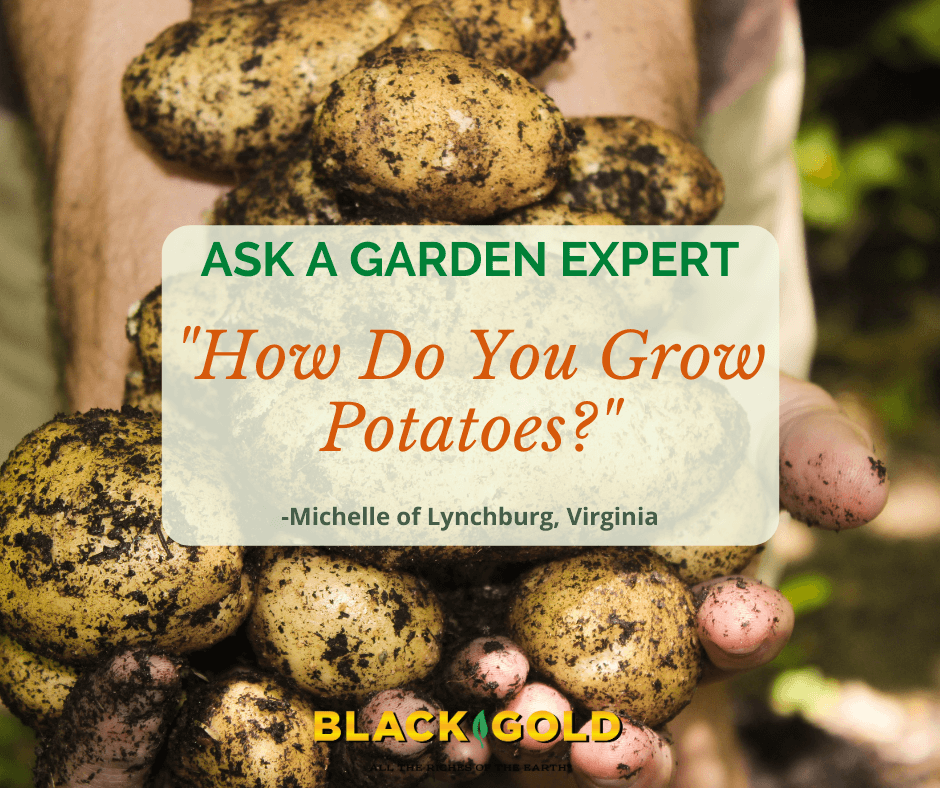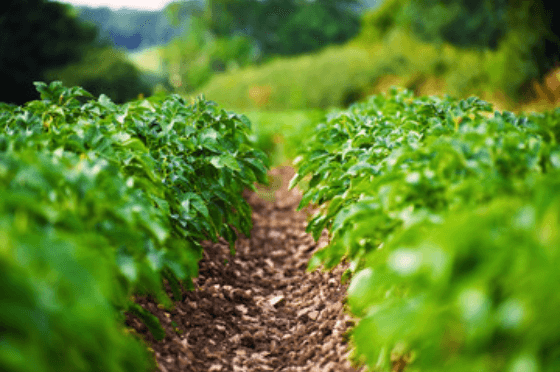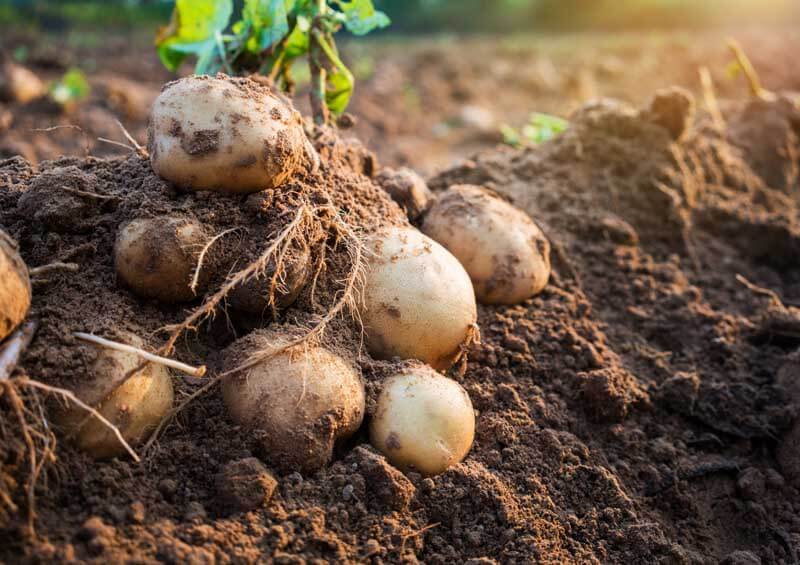
“I grew potatoes this summer. I planted them the correct way and they started to grow. I kept covering the leaves with dirt (leaving the top leaves uncovered.) The vines grew like weeds. It kept covering them but a few days later they would be out of control again. I had them in containers. Eventually, I had no way to build up the sides of the containers and I had to stop covering them. When I stopped covering them the covered vines were about 4-5 feet tall. I went to harvest them a few days ago and I had three minuscule potatoes. It was a lot of work for very little reward. I just wonder why they grew so fast. Obviously I did something wrong.” Question from Michelle of Lynchburg, Virginia
Answer: It sounds as though your potatoes put all of their energy into leaf and stem growth and hardly any energy into developing storage tubers, or potatoes. The plants should have died back before harvest. That is the indicator that they are ready to dig.
There are several reasons why your potato harvest was unsuccessful. Let me provide an overview of how to grow potatoes and increase tuber development to help you troubleshoot.
How to Grow Potatoes

Potatoes need full sun, fertilizer, average water, cool, and then warm growing conditions to produce well. Grow a known potato variety, so you can determine when to harvest. Some produce potatoes early, midseason, or late. ‘Yukon Gold’ is a good mid-to early-season yellow variety to try, ‘Carola’ is a good late yellow variety, and ‘Dark Red Norland’ is an excellent mid-to early-season red-skinned type. Knowing the variety gives you information about expected performance, yields, and harvest time.
Start beds as soon as the soil is workable–often a month or more before the last frost date. Till the soil and work in lots of organic matter, like Black Gold Garden Compost Blend and peat moss. Finally, create a 3-inch furrow down each row for planting the potatoes.
Four Steps to potato planting.
- Plant potatoes in furrows five to six weeks before the last frost date of the season. Place robust seed potatoes in furrows 6 to 12 inches apart in rows 3 feet apart. Sprinkle in a fertilizer formulated for potatoes, and them berm soil over them to a height of 12-18 inches. (The berming process reduces the hilling process.)
- After several weeks, potato shoots should rise from the berms. Once they are 8-10 inches tall, start hilling. Cover the stem bases with 3-6 inches of soil. Do this twice. (This is also the time to manage Colorado Potato Beetles. Click here to learn more about managing potato beetles naturally.)
- If conditions are dry, irrigate moderately, as needed, until the potato plants flower. Keep beds hoed and weeded. It helps to place straw or leaf mulch between the rows to reduce weeds.
- Once the plants flower, let them be and withhold water. Within a couple of weeks, the tops should turn yellow, die, and dry out.
How and When to Harvest Potatoes

New Potatoes can be harvested as soon as the plants begin to bloom. Wait for larger potatoes. These can be harvested after the plants have fully died away. You can harvest all of your potatoes at this time for storage, or just harvest them as needed. Be sure to get them all out of the ground shortly after the first frost of the season. Otherwise, they will develop an unpleasant sweet flavor.
If you are growing potatoes in a container, adapt these growing principals to your potted garden situation. If I were to harbor a guess, I would say that you kept watering and nurturing your plants, which caused them to look robust and happy but discouraged tuber development.
I hope that these tips help.
Happy gardening,
Jessie Keith
Black Gold Horticulturist
